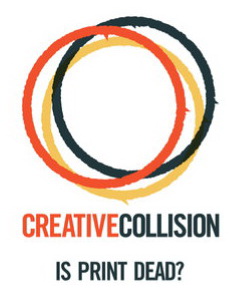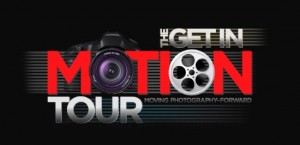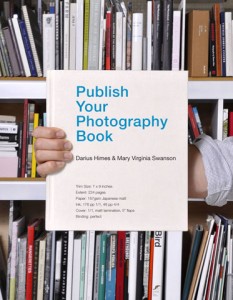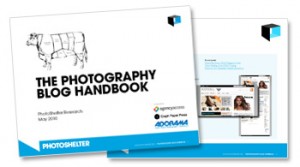PHOTOGRAPHERS. ILLUSTRATORS. When you’re busy meeting multiple project deadlines, it’s easy to let marketing efforts lapse. But when you’re about to wrap up the last job in the pipeline, panic sets in because no new projects await. It’s time to restart your marketing!
 Keith Gentile, CEO of Agency Access, understands why many small commercial photography studios and illustrators neglect marketing when things get busy. The trouble is, he says, “Marketing only works if you’re consistent.”
Keith Gentile, CEO of Agency Access, understands why many small commercial photography studios and illustrators neglect marketing when things get busy. The trouble is, he says, “Marketing only works if you’re consistent.”
This is particularly true in today’s ultra-competitive environment. Your name and work must be in front of a buyer when they are ready to make the assignment for which you are best qualified.
Agency Access can help. They provide one-stop direct-marketing support for commercial photographers, illustrators, artist reps, and stock agencies. The company’s sole purpose is to help members find new clients.
At the heart of Agency Access services is an international database of 60,000+ commercial art buyers at ad agencies, magazines, book publishers, in-house departments, graphic design firms, and architectural firms. To help you connect with the individuals included in this database, Agency Access can help you plan, design, produce, and send email and direct-mail marketing campaigns.
With the all-inclusive Campaign Manager Pro program, you will work with a team of two Agency Access marketing experts, a Professional Artist Consultant, and a Campaign Manager. To help you land the type of jobs you want, the consultant will help you improve your brand, choose the right images, and edit your website. If your consultant believes your work isn’t quite up to the quality standards most clients require, they will coach you on steps you can take to improve. Your Campaign Manager Pro team will also help you develop a marketing plan, create the perfect leave-behind portfolio, produce and send direct-mail postcards, design and send e-mails, and conduct 6 cycles of follow-up telemarketing on your behalf.
Merger with ADBASE
Gentile expects services to Agency Access clients to become even better now that the firm has acquired the Adbase marketing mailing list service for creative professionals and the Adbase FoundFolios division. The FoundFolios Creative Network combines an online portfolio site for artists with a social-networking community for photographers, artists, designers, and photo buyers.
 Adbase and FoundFolios are now divisions within Agency Access and will be maintaining their websites, brand identity and product offerings. Nelson Nunes, the co-founder of Adbase and FoundFolios, is now the vice president of the ADBASE group within Agency Access, responsible for its technology and day-to-day operations.
Adbase and FoundFolios are now divisions within Agency Access and will be maintaining their websites, brand identity and product offerings. Nelson Nunes, the co-founder of Adbase and FoundFolios, is now the vice president of the ADBASE group within Agency Access, responsible for its technology and day-to-day operations.
Gentile believes that “Combining forces will give both Agency Access and ADBASE members the best of both worlds.”
Adbase subscribers can continue to use the self-serve marketing tools they originally purchased from Adbase. Or, they can migrate to the full range of marketing support, campaign-management, and consultation services available through Agency Access.
Through new bundled subscription offerings, Agency Access members can purchase FoundFolios, additional self-serve marketing options, and all members will benefit from even stronger technology.
Gentile says the Adbase and Agency Access mailing lists will both continue to be updated and improved. Eventually, the two databases will be merged to become the largest, most comprehensive database available to commercial photographers and artists. For example, commercial photographers who want to market some of their work as fine art will be able to connect with some of the fine-art photography galleries that were originally included in the Adbase list. And Adbase members will be able to use the new Agency Access database of 6,000 broadcast clients for motion artists.
In a recent interview, Gentile said he doesn’t expect the consolidation of the companies to result in higher prices: “We have no plans to raise prices, and in fact some prices may drop. We’re just happy that we’re going to make Agency Access even better than it was before.”
Free Marketing Advice
Even if you don’t plan to use Agency Access or Adbase services in the immediate future, check out the valuable marketing advice that is freely available through Agency Access and Adbase blogs, podcasts, and videos. Here are a few posts that caught my eye:
Art Buyers Talk About Assigning Still + Motion Projects
Photographers: Stop Treating Video as an Add-On
Art Buyers Talk About Stock Imagery
Why and How Artists Should Use Social Media
21 Questions to Accurately Estimate a Photography Job
Some blog posts are being consolidated into e-books. When I signed up to follow Agency Access on Twitter, I received a link to en e-book entitled “35 Tips for Getting Noticed, Getting Meetings, and Getting Hired.”
 The Creative Collision video series lets you see for yourself how industry experts answer questions frequently asked by Agency Access members. The Creative Collision team (Jennifer Kilberg, Suzanne Sease, and Amanda Sosa Stone) have interviewed top reps, art producers, art directors, and creative directors from firms such as The Martin Agency, StrawberryFrog, Saatchi & Saatchi, Jed Root, Bernstein & Andriulli, and GSD&M. Take a look:
The Creative Collision video series lets you see for yourself how industry experts answer questions frequently asked by Agency Access members. The Creative Collision team (Jennifer Kilberg, Suzanne Sease, and Amanda Sosa Stone) have interviewed top reps, art producers, art directors, and creative directors from firms such as The Martin Agency, StrawberryFrog, Saatchi & Saatchi, Jed Root, Bernstein & Andriulli, and GSD&M. Take a look:
Creative Collision Video: Is Print Dead?
Creative Collision Video: The Industry’s Direction
Creative Collision Video: Making Sense of Printed vs. iPad Portfolios
A free 3-day trial of Agency Access is available. The trial includes an online demonstration of how to use the Agency Access website.
LINKS







